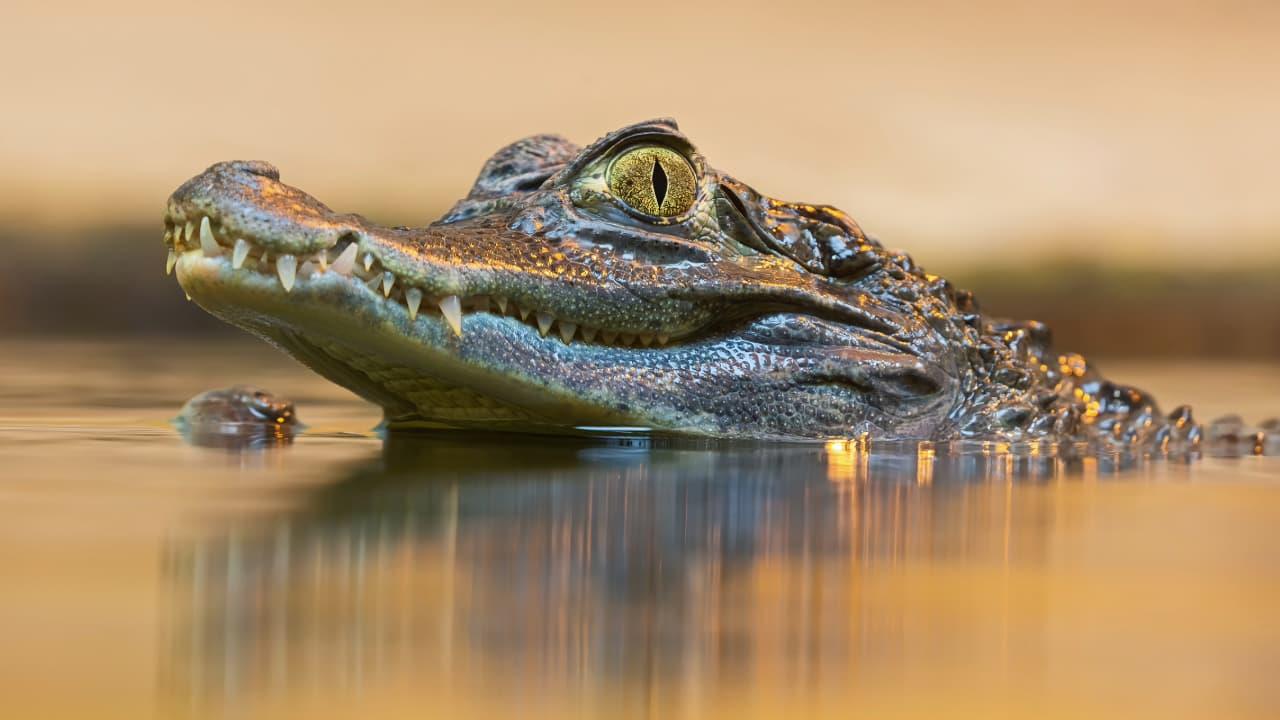Montana Student Discovers New Tiny Crocodile Species From 95 Million Years Ago
A student in Montana, USA, found a fossil no bigger than a pinkie tip that has led scientists to discover an entirely new species of ancient crocodile relative. This tiny fossil gives new insights into the variety of croc-like creatures that once roamed the Earth millions of years ago.
Meet“Elton”, the Tiny Croc from the Past
Around 95 million years ago, a small crocodyliform, a distant relative of today's crocodiles, lived on land in what is now southwest Montana. Researchers have nicknamed it“Elton.” Unlike modern crocodiles, which are large and live mostly in water, Elton was tiny, even as an adult. Experts say that young Elton was about the size of a large lizard, only 2 feet long. Even fully grown, it would have reached just 3 feet at most. Most crocodile relatives from this time were much larger and lived in water, but Elton was different.
Elton didn't live in rivers or seas like most of its croc family. It lived on land and likely ate a mix of plants, insects, and small animals. Scientists identified this by studying its unique teeth, which were all different shapes. Common crocodilians have simple cone-shaped teeth. This difference in teeth and body structure suggests Elton belonged to a previously unknown group of land-dwelling crocodyliforms that lived in North America during the Cretaceous period.
This discovery was made by Harrison Allen, a student at MSU studying Earth sciences. In the summer of 2021, while digging in an area known as the Blackleaf Formation near Dillon, Montana, Harrison spotted a tiny fossil with an unusual texture. It was no longer than the tip of his pinkie finger.
He brought it to Professor Varricchio. After examination, it turned out to be part of a very small, very preserved croc skull. This exciting find was only the second known vertebrate ever discovered in that area.
In his paper, Harrison named this ancient animal as Thikarisuchus xenodentes, meaning“strange-toothed crocodile from Thikara” (a Native American term related to the region).
Digging, Sifting and Scanning
The day after finding the first fossil piece, Harrison and his classmates collected several bags of surrounding soil. Back at the lab, he and fellow student Dane Johnson carefully sifted through the material, eventually uncovering dozens of tiny bones, so small they could all fit in the palm of a hand.
The bones came from almost every part of the animal, including the limbs, back, jaw, and skull. Because they were so fragile, they didn't try to glue them together. Instead, they used CT scans to capture detailed 3D images of the bones. Harrison spent more than 100 hours colouring and separating the images so that the bones could be seen clearly against the rock they were trapped in.
A New Family of Croc Relatives
The fossil evidence showed that Thikarisuchus didn't belong to any known group of crocodyliforms. The scientists have now placed it in a new family, called Wannchampsidae.
Interestingly, this group shares similarities with another small croc group found in Europe, called Atoposauridae, even though the two are not closely related. This suggests that both groups evolved similar features separately, possibly because they lived in similar environments. Scientists call this "convergent evolution".
As Harrison continues his research, he's fascinated by the incredible variety of extinct crocodyliforms. Professor Varricchio said he was thrilled to work with a student so passionate and dedicated.
Legal Disclaimer:
MENAFN provides the
information “as is” without warranty of any kind. We do not accept
any responsibility or liability for the accuracy, content, images,
videos, licenses, completeness, legality, or reliability of the information
contained in this article. If you have any complaints or copyright
issues related to this article, kindly contact the provider above.
Most popular stories
Market Research

- New Cryptocurrency Mutuum Finance (MUTM) Raises $15.8M As Phase 6 Reaches 40%
- Bydfi Joins Korea Blockchain Week 2025 (KBW2025): Deepening Web3 Engagement
- Yield Basis Nears Mainnet Launch As Curve DAO Votes On Crvusd Proposal
- 0G Labs Launches Aristotle Mainnet With Largest Day-One Ecosystem For Decentralized AI
- Ethereum-Based Defi Crypto Mutuum Finance (MUTM) Raises Over $16 Million With More Than 720M Tokens Sold
- Fintech's Gender Gap In Focus: Drofa Comms' Women Leading The Way Joins Evolvh3r's She Connects At TOKEN2049





















Comments
No comment